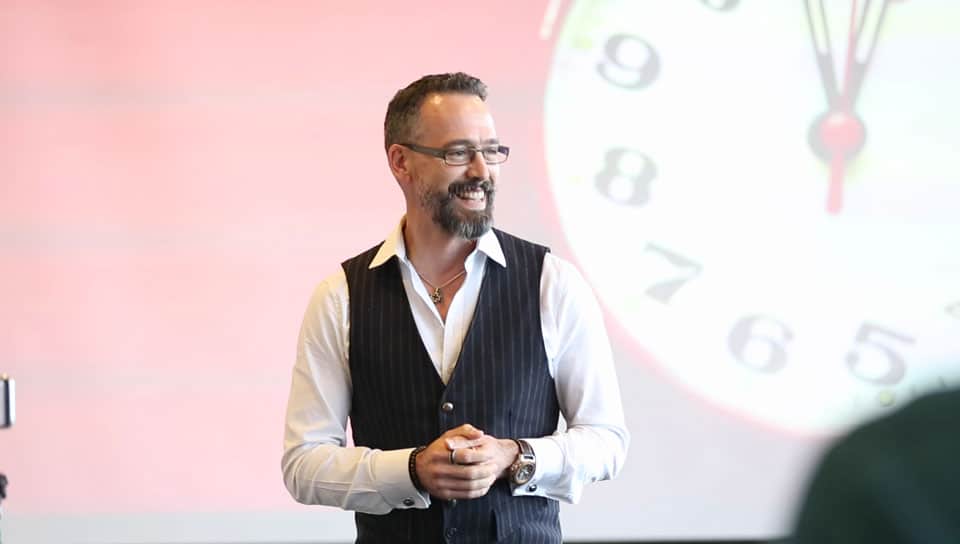We’re all familiar with the idea of a traditional career ladder, with a set of linear steps mounting ever higher. But many careers resemble a jungle gym, where people move across and around and up as they build unique paths to success. I know my career did.
I originally went to school to study saxophone performance but sadly, soon recognized that I wasn’t going to be the next Kenny G. When I entered the business world, I realized that I was more of a generalist than a specialist as I liked working across many different aspects of a business—but what career could accommodate this preference? As I was going through this existential moment in my early career, I was approached by my former boss’s boss at Ariel Investments, Mellody Hobson, to be her Chief of Staff.
When I told her that I didn’t even know what a Chief of Staff did, Mellody just said, “I’m really busy, and I’m getting busier by the day. I need more leverage to get my work done effectively and I think you can figure it out.”
This turned out to be the best career experience I’ve ever had. As her Chief of Staff, I was able to optimize Mellody’s time so she could focus on what was important to the organization as a whole. I also began to see that my role could be useful at many other companies, helping to improve the effectiveness of executives, executive teams, and even broader organizations.
A Staggering Surge in Executive Anxiety
That was in 2014, when the role of Chief of Staff was almost unknown outside of military or political realms. Today, Chiefs of Staff are increasingly found in C-suites. In fact, the pandemic has massively expanded interest in this role. In 2019, there were 590 job posts for Chiefs of Staff on LinkedIn. Today, that number is nearly 12,000—a stunning 1,934% increase in just three years.
What explains this astounding growth? Top executives are not immune to the many anxieties afflicting the world in 2022. With rising inflation, labor shortages, supply chain disruptions, and changing consumer behaviors top of mind for CEOs and other C-suite executives, leaders across industries report feeling both optimistic and concerned about the economic climate.
Many of them, however, are under tremendous stress within their own organizations. A recent study found that 57% of CEOs said they fear their company is not implementing changes fast enough to stay ahead of global challenges. Additionally, around 72% are anxious about their own job security, a 20 percent jump from last year’s figures.
These numbers represent a staggering surge in executive anxiety. Much of the current increase is tied to external forces, including the pandemic, geopolitical strife and supply-chain bottlenecks. But recent proprietary research conducted by my organization, along with years of experience working with top executives, has served to confirm my insight from two decades ago: adding the role of Chief of Staff to the C-suite enables many organizations to directly address a number of executive challenges.
Analyzing Executive Office Effectiveness
Here’s the thing: to move from anxiety to effective action, organizations need to identify where their leadership challenges fall across specific aspects of executive practice. Failure to activate these practices will cut into the effectiveness of the executive office and can, in turn, negatively affect an organization’s bottom-line success.
To be impactful, CEOs and other C-suite executives need to address:
• Time management – Effectively understand how and where their time is used
• Strategic focus – Reorient executive focus from short-term output to strategic outcomes
• Promoting effective communication – Build team communication and collaboration for efficient knowledge-sharing
• Amplifying strengths – Assess team and executive strengths to allocate resources for maximum impact
• Concentrating on top priorities – Develop and implement long-term strategic plans
• Ensuring effective decision-making – Eliminate both indecision and rash decision-making
CEOs today are struggling to address exceptional challenges that have exacerbated the difficulties of implementing these executive practices. To fully understand the specific issues, organizations should analyze high-level obstacles from a practical, on-the-ground perspective.
7 Questions to Determine if Your Executive Office is Running Effectively
Organizations need to understand where their leadership practices are meeting current and specific challenges — and where, in fact, they aren’t. You can gain accurate insights into executive effectiveness by asking the following seven questions:
1. Is executive time being spent on too many projects or initiatives that do not push the business forward?
2. Are meetings being run effectively, or are team members not as prepared as they should be?
3. Do leaders feel disconnected from the people in their organization or do they know how team members view their positions?
4. Are executives receiving effective support in promoting the organization’s culture, as for example, in spearheading DEI initiatives?
5. Are leaders able to delegate important strategic initiatives that do not fall under a specific department?
6. Do executives have accountability support to ensure appropriate follow-up is taking place and people are acting on expectations?
7. Do leaders have an insightful “honest broker,” a non-biased partner who will raise and help resolve their blind spots?
Solving for Executive Impact
How can organizations make significant improvements in leadership performance if the answers to these seven questions aren’t optimal? The Chief of Staff can help by better managing information flow, rationalizing the use of time and facilitating strategic planning and implementation. By optimizing executive time, an effective Chief of Staff creates space in the C-suite’s workflow so that leaders can consider the big picture, future opportunities and top priorities. He or she also serves to develop effective strategies for the executive office’s people, processes, and technology. Drawing on cross-functional viewpoints and relationships, the Chief of Staff can facilitate holistic solutions.
Finally, research around Chief of Staff responsibilities finds that this role generally focuses on the company’s long-term success, rather than on the promotion of short-term goals. For example, in a 2021 study conducted by the University of Colorado, Boulder, Chiefs of Staff across 24 industries reported that 81% of them are involved in specifying strategy for the organization. The results found that:
• 88% of Chiefs take an active role in strategic business planning.
• 82% of Chiefs participate in decision-making regarding changes in their company’s vision and strategies for growth
• 53% of Chiefs frequently participate in capital budget decisions, including the selection and financing of long-term investments
These are challenging times for CEOs and other C-suite leaders — but a Chief of Staff can deliver the space and support needed to ensure optimal productivity and performance.
























































![Key Metrics for Social Media Marketing [Infographic] Key Metrics for Social Media Marketing [Infographic]](https://www.socialmediatoday.com/imgproxy/nP1lliSbrTbUmhFV6RdAz9qJZFvsstq3IG6orLUMMls/g:ce/rs:fit:770:435/bG9jYWw6Ly8vZGl2ZWltYWdlL3NvY2lhbF9tZWRpYV9yb2lfaW5vZ3JhcGhpYzIucG5n.webp)

















